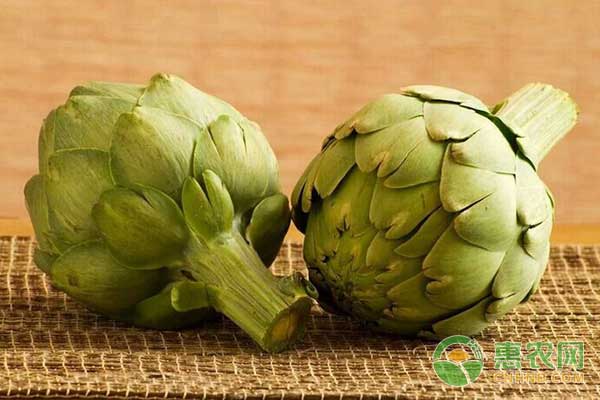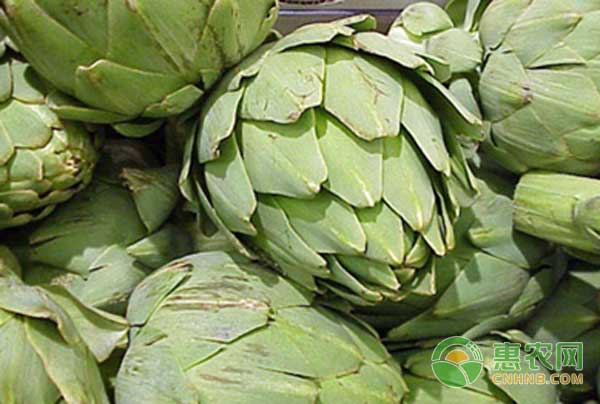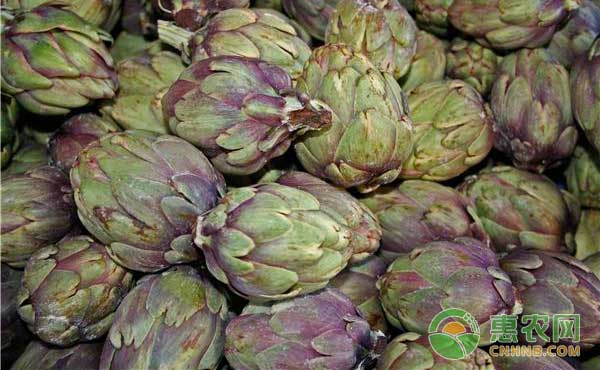What is artichoke? How is the artichoke planted? What is the efficiency of acacia planting?
When it comes to artichokes, everyone may be strange. The artichokes are actually vegetables with a taste between fresh bamboo shoots and mushrooms. In addition to fresh food and cooking, the artichoke also has ornamental value, or can be processed into canned food, quick-frozen food, or made into health tea, aperitif, and deep processing. Under normal circumstances, the artichoke can grow more than 12 flower buds, and the harvesting period is long. It can be harvested from May to August, and the yield per mu can reach at least 3000-4000 kg. According to the current market price of 25 pounds, the net profit of an acre of land is about 30,000 yuan, and the investment will return in the current year. Here is a brief introduction to the cultivation techniques of artichokes. I. Import and export arrangements Appropriate climatic conditions are very important for the production of artichokes. Artichoke is a large-scale, large-fat and cool-type flower-type vegetable. The optimum temperature for planting is 24°C during the day and 13°C at night. It can withstand low temperatures and frosts around 0°C. According to market demand, combined with local climate and geographical environment conditions, annual planting production is implemented as much as possible. Choose the cultivated land that can fertilize the soil fertile energy; arrange for annual or perennial planting on paddy fields and Taitian soil at an altitude of 1500-2300 m, as far as possible without continuous cropping and avoid rotation with the compositae crops. Second, the application of base fertilizer After the end of the spring harvest, plow the sun and clean the garden. Tillering and drying for 20-30 days, finely crushing the soil to make the ground fine, and apply the base fertilizer. In line with the principle of farmyard manure, farmyard manure and chemical fertilizer application; 15 kg of lime applied per mu, 30 kg of compound fertilizer and 2000 kg/mu of fertilized high-quality farmyard manure, 50 kg/mu of superphosphate, potassium sulfate 10 Kg/mu, borax 3 kg/mu, magnesium sulfate 6 kg/mu as the base fertilizer, and timely tillage to make the base fertilizer evenly distributed in the soil tillage layer. Or mark the ridge line first, mix the above-mentioned base fertilizer evenly and apply it to the ridge ditch, and promptly use it as a ridge to cover the soil, and require Tianpinggou straight ridge high energy irrigation to discharge. Third, ridge film After the application of the base fertilizer on the site, the ridges will be ridged, and the ridges will be dominated by the north-south direction. It is covered with a plastic film covering technique and covered with a black plastic film to prevent weeds from reducing evaporation. After the fine soil is ridged, the mulch is flattened and the ridge is covered with silver black or black mulch. The mulch is covered with ridges and leaves no gaps. The mulch is compacted with mud, and the membrane is covered with full surface. Fourth, planting specifications According to the characteristics of the variety, climatic conditions, soil fertility, and reasonable close planting, the population structure was determined. In order to improve the photosynthesis productivity, quality and ease of field operation of the artichoke, the cultivation of the wide and narrow rows of sorghum and single-row ridge cultivation was carried out, and the orientation was consistent with the wind direction. V. Transplanting and planting After covering the planting ridges with silver black or black mulch film, the cross-holes are opened according to the predetermined plant spacing, and the cultivating seedlings are planted. The planting work begins in late October and ends in mid-November. During this period, it is necessary to strengthen the management of water and fertilizer in the field, and promote the rapid growth of transplanted seedlings. When planting, it is necessary to shallowly water the fixed root water, and at the same time use pollution-free insecticides such as phoxim and trichlorfon to prevent damage caused by underground pests. After planting, the soil should not exceed 1 cm of the base of the rhizome. The root water should be poured to prevent the heart from being buried, and the fixed seedlings (stomach stomata) should be sealed with fine soil to see the position of the cotyledons or cotyledons. Seedling cultivation and colonization can also be carried out by first coating the film after planting. Drainage ditches are dug around the field, and the ridges are required to be flat and straight. In order to improve the soil utilization rate, it should be planted on the field layout according to the rotation characteristics of the artichoke leaves. Sixth, seedling management Grasp the field management work during the seedling period to ensure that the whole seedling force promotes its early birth. In order to ensure that the whole seedlings can achieve about 700 healthy seedlings per acre. Seriously carry out field inspections, rapid planting of lack of seedlings, and watering the roots. After survival, apply partial fertilizer to prevent large-scale seedlings, timely repair of mulch film breakage, remove weeds; and find low-toxic, low-residue pesticides 50% phoxim 1000-1500 times liquid, trichlorfon 800- 1000 times and other pesticides to control roots. More mites are sprayed with a net of cockroaches such as cockroaches and cockroaches. Root rot can be removed by spraying lime or root rot, and it can also be controlled with 5.7% Baishu emulsifiable concentrate. Especially in the vegetable field, there are small tigers, cockroaches, cockroaches, yellow ants, mites, noctuidae and other pests, causing the seedlings to die, the leaves have holes, the mesophyll is eaten, etc., available in Le Siben 40.7 The emulsifiable concentrate of 800-1200 times is sprayed on the base of the rhizome in the evening, and the snail is killed by the snail. After the seedlings are planted, they will be given a “promoting seedling fertilizerâ€, mainly based on clearing manure water. The nutrient growth period should be based on quick-acting nitrogen and phosphate fertilizers, such as ammonium bicarbonate, ammonium phosphate, urea and ammonium sulfate. In order to build a high-yield shelf before the spring to achieve high quality and high yield. Before the Spring Festival, we will seize the time to conduct field management centered on fertilizer and water. Apply a good seedling fertilizer "Nian Daer Fei". On the basis of applying the base fertilizer, the seedling fertilizer can also be applied with 8-10 kg of high potassium per acre. The base fertilizer is insufficient to increase 8-10 kg of potassium sulfate, combined with the seedling fertilizer to pour the spring water. Strive to achieve the vigorous growth of the vegetative body of the artichoke plant before the Spring Festival to a narrow line completely closed. Seven, medium-term management At this time, the growth of the artichokes is a period of vigorous vegetative growth. The irrigation and Moisturizing should be the core, so that the irrigation can be saturated once every ten days. Promote the early closure of the field and smoothly enter the bud stage. When the bud is used, the “flower bud fertilizer†should be re-applied. The water-soluble fertilizer can be applied 8-10 kg/mu, or the high-potassium fertilizer can be applied 18-20 kg/mu. Eight, harvest management The flowering period is a period of vigorous reproductive growth. Fertilizer, water management and pest control are the key, and it is also important for high quality and high yield of artichokes. The growth of artichokes requires sufficient light conditions, sufficient sunlight, fertile soil, deep roots and leaves, thick and numerous flower buds, many flower buds, good quality and high yield. During the whole growth period, the artichokes are required to supply sufficient and uniform water to ensure the soil is moist. If the water is accumulated in the gully, it will easily cause rotten roots to die. However, when the buds are budd in the dry and high temperature in May, water must be timely to obtain the quality. Good, high-yield commodity flower buds. After the buds are buds, there is not enough water protection, and the flower buds produced by them will not meet the eligibility criteria and become commodity buds. The artichokes are generally harvested up to 250 grams, leaving two leaves when harvested and then beveled from below with a knife. Artichoke is a new variety introduced abroad, so there is no artichoke seed in China. It is only possible to introduce artichokes from abroad. The above is the artichoke planting technology, the content is for reference only, if you want to know more about agricultural technology, please pay attention to the Hui Nong School!
China Daily chemical Suppliers
Here you can find the related products in Daily chemical, we are professional manufacturer of Daily chemical. We focused on international export product development, production and sales. We have improved quality control processes of Daily chemical to ensure each export qualified product.
If you want to know more about the products in Daily chemical, please click the Product details to view parameters, models, pictures, prices and Other information about Daily chemical.
Whatever you are a group or individual, we will do our best to provide you with accurate and comprehensive message about Daily chemical!
Hydrolyzed Keratin, Menthol, Daily Chemistry, Cosmetics Field Xi'an Gawen Biotechnology Co., Ltd , https://www.ahualynbios.com

